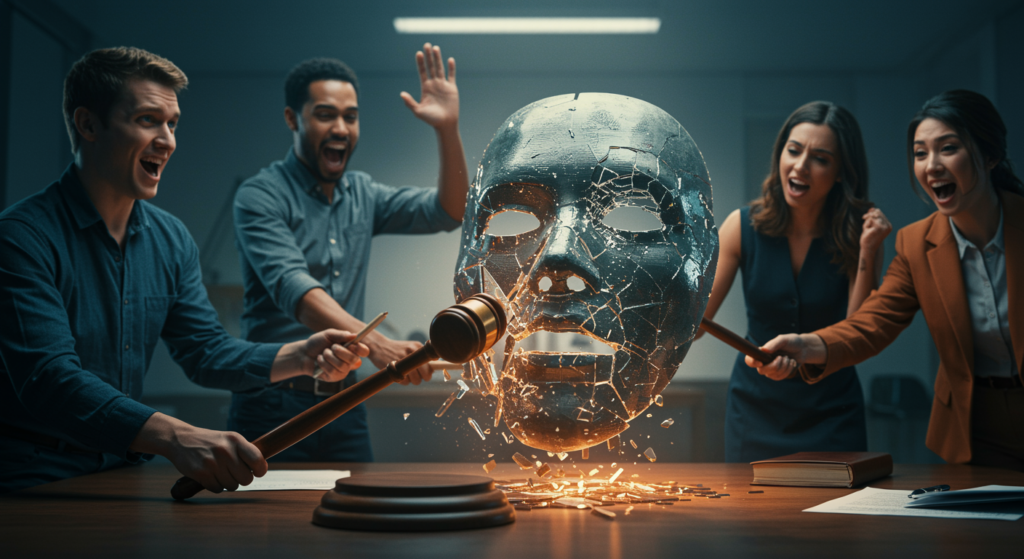
AI Deepfakes Legislation: US Congress Passes Bill to Combat Revenge Porn
Introduction to AI Deepfakes Legislation
Have you ever wondered how rapidly evolving technology could upend personal privacy? The US Congress has answered that call with the new AI deepfakes legislation, known as the Take It Down Act. This bipartisan effort tackles the surge of AI-generated deepfakes and revenge porn, making it easier for victims to demand swift removal of nonconsensual intimate imagery. With strong support from lawmakers and tech giants, this bill is on the cusp of becoming law, potentially reshaping digital rights for good.
The Rise of Deepfake Technology and Its Dangers
Deepfake technology, powered by artificial intelligence, has exploded in recent years, allowing anyone to create eerily realistic videos or images that place people in fabricated, often explicit situations. Imagine waking up to find your face swapped into compromising content online—it’s a nightmare that’s becoming all too real for many. Studies indicate that most deepfakes involve nonconsensual nudes, leading to devastating effects on victims’ mental health and careers, as highlighted in reports from cybersecurity experts.
This AI deepfakes legislation aims to curb these risks by addressing the core issues of consent and digital manipulation. For instance, a high school student targeted by altered photos might face bullying that lasts years, underscoring why proactive measures are essential.
Understanding AI Deepfakes Legislation: The Take It Down Act
At its heart, the Take It Down Act is a game-changer in AI deepfakes legislation, criminalizing the sharing of sexually explicit content—whether real or AI-created—without permission. This law doesn’t just target revenge porn; it extends to deepfakes, offering victims a direct line to justice. Key elements include making it a federal offense to distribute such material and enforcing rapid takedowns.
- Criminalization of nonconsensual deepfakes: Offenders could face serious penalties for posting explicit images, real or fabricated, without consent.
- 48-hour removal mandate: Platforms must act quickly on verified requests, preventing prolonged exposure that can ruin lives.
- FTC enforcement: The Federal Trade Commission steps in to ensure compliance, adding teeth to this AI deepfakes legislation.
- Victim reporting tools: Social media sites are required to create user-friendly systems for flagging harmful content.
What makes this act stand out is its focus on speed and accountability—something victims have long demanded.
Bipartisan Support Behind AI Deepfakes Legislation
It’s rare to see such unity in Washington, but the Take It Down Act has bridged divides with overwhelming backing. Led by Senators Amy Klobuchar and Ted Cruz, along with House representatives like Maria Elvira Salazar and Madeleine Dean, this AI deepfakes legislation passed the Senate unanimously and the House with a 409-2 vote. First Lady Melania Trump’s advocacy added extra momentum, drawing attention to the human toll of these technologies.
Tech leaders from Meta, X, TikTok, and Snapchat have also voiced support, recognizing the need for ethical AI use. This coalition shows how AI deepfakes legislation can evolve from partisan debates into real-world solutions.
How AI Deepfakes Legislation Impacts Tech Platforms
Under this new framework, social media companies can’t just ignore reports anymore—they have to respond swiftly. Platforms must set up easy ways for victims to report nonconsensual content and remove it within 48 hours, or risk FTC penalties. For example, think about a case where a young professional’s altered image went viral; previously, removal could take months, but now, this AI deepfakes legislation promises faster relief.
Table: Key Provisions of the Take It Down Act
| Provision | Description |
|---|---|
| Scope | Covers all sexually explicit imagery, including AI-generated, shared without consent |
| Removal Timeline | Mandatory removal within 48 hours of a victim’s verified request |
| Enforcement | FTC oversight with potential fines for non-compliance |
| Criminal Penalties | Federal charges for distributing nonconsensual images |
| Applicability | Applies to social media, websites, and other digital platforms |
This structure not only protects individuals but also pushes the industry toward better practices.
Legal Debates Surrounding AI Deepfakes Legislation
While the Take It Down Act has broad appeal, it’s not without controversy. Critics worry about First Amendment implications, arguing that AI deepfakes legislation might stifle free speech. However, experts like law professor Zephyr Teachout counter that nonconsensual explicit content doesn’t qualify for such protections, making the law’s foundation solid.
Could this spark broader discussions on digital rights? It’s a valid question as courts weigh in.
Victim Impact: How AI Deepfakes Legislation Safeguards Lives
The emotional scars from revenge porn or deepfakes can last a lifetime, from anxiety to lost job opportunities. This AI deepfakes legislation empowers victims by ensuring quick content removal and legal recourse. As Senator Klobuchar noted, “Victims will be able to have this material removed and hold perpetrators accountable.”
Consider a hypothetical scenario: A college student discovers a deepfake of themselves online. With this law, they can report it and see results fast, potentially avoiding long-term damage. It’s a step toward restoring control in an increasingly digital world.
The Role of Tech Companies in AI Deepfakes Legislation
Big tech isn’t just observing; they’re actively engaging with AI deepfakes legislation to combat abuse. Companies like Meta and TikTok are developing tools for faster detection and removal, fostering a safer online space. By endorsing the Take It Down Act, they’re committing to user trust and ethical AI practices.
What if more platforms adopted these standards voluntarily? It could lead to a ripple effect, enhancing global digital safety.
Comparing Global Approaches to AI Deepfakes Legislation
The US isn’t alone in this fight; other countries are crafting their own responses. The European Union’s “right to be forgotten” allows individuals to request data deletion, but it lacks the criminal penalties seen in US AI deepfakes legislation. For a deeper look, check out this resource on EU policies.
This US model, with its emphasis on rapid takedowns, might inspire international standards and encourage cross-border cooperation.
Strategic Implications of AI Deepfakes Legislation
As AI advances, so do the threats, making AI deepfakes legislation a blueprint for the future. It promotes innovation in detection tools while building a more trustworthy online environment. Victims gain immediate protections, and society as a whole benefits from reduced misuse.
How will this influence upcoming tech developments? It’s an exciting question, as we see potential for AI to be a force for good.
Wrapping Up: The Path Forward for AI Deepfakes Legislation
The Take It Down Act marks a pivotal win in AI deepfakes legislation, addressing revenge porn and digital harms head-on. By enforcing accountability and swift action, it paves the way for a safer internet. If you’re passionate about online privacy, share your thoughts in the comments below or explore more on digital rights—let’s keep the conversation going.
Sources
- Politico. “House Sends Intimate Deepfakes Bill to Trump’s Desk.” Link
- Cyberscoop. “Take It Down Act Passes House Amid First Amendment Concerns.” Link
- Klobuchar Senate Page. “News Release on Take It Down Act.” Link
- CBS News. “House Votes on Take It Down Act for Deepfake Pornography Victims.” Link
- Other sources: Reports from USENIX Security and tech analyses, as referenced in the original material.
AI deepfakes legislation, Take It Down Act, revenge porn law, nonconsensual deepfake, US Congress bill, AI-generated content, digital privacy rights, deepfake technology, online safety measures, bipartisan tech legislation







